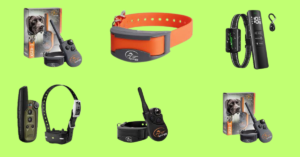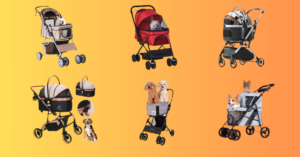Welcoming a furry friend into your life is undoubtedly one of life’s greatest joys. From their boundless energy to their unwavering loyalty, dogs quickly become cherished members of our families.

Yet, amid the excitement of bringing a new pup home, many pet owners grapple with an essential question: how can we ensure our canine companions feel safe, secure, and comfortable in their new environment?
Enter the humble yet indispensable dog crate. Far more than just a containment tool, a properly utilized crate serves as a sanctuary for your furry friend – a space where they can retreat, relax, and recharge.
Whether you’re a seasoned pet parent or embarking on the journey of dog ownership for the first time, understanding the ins and outs of crate training is paramount.
In this comprehensive guide, we’ll delve into everything you need to know about dog crates: from selecting the right type and size for your pup to incorporating crate training into your daily routine. Whether you’re seeking advice on crate training a new puppy, managing separation anxiety, or simply looking to enhance your dog’s overall well-being, we’ve got you covered.
List off Dog Crate.
01.Amazon Basics – Durable, Foldable Metal Wire Dog Crate with Tray

02.Carlson Pet Products SECURE AND FOLDABLE Single Door Metal Dog

03.MidWest Homes for Pets Newly Enhanced Single Door iCrate Dog
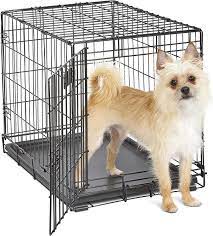
04.MidWest Homes for Pets Newly Enhanced Double Door iCrate
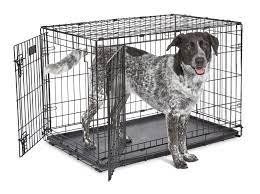
05.Petmate Vari Dog Kennel 32″, Taupe & Black, Portable Dog Crate for Pets
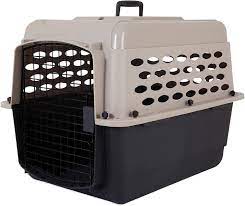
06.Amazon Basics – Folding Soft Crate for Cat, Dog, Rabbit, 36 Inch, Tan,
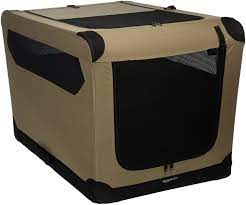
07.Precision Pet Products Two Door Provalue Wire Dog Crate, 19 Inch, F
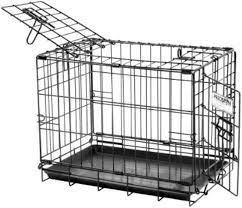
08.iCrate Dog Crate Starter Kit | 24-Inch Ideal for Small Dog Breeds (weighing

09.VEVOR Foldable Portable Pet Playpen, 36x36x23 in Dog Cat Pen + Free
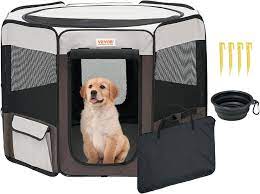
10.IRIS USA 24″ Exercise 4-Panel Pet Playpen with Door, Dog Playpen
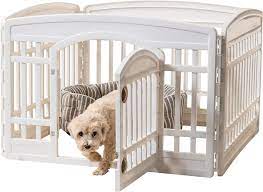
FAQ…
1. What is a dog crate, and why should I use one?
A dog crate, also known as a kennel or cage, is a secure enclosure designed specifically for dogs. While some may initially view crates as cages, they serve a much greater purpose. Crates provide dogs with a safe and comfortable space they can call their own, mimicking the den-like environment that canines naturally seek out in the wild. They can be used for various purposes, including house training, managing destructive behavior, and providing a secure resting place for your pet.
2. What are the different types of dog crates available?
There are several types of dog crates to choose from, each with its own advantages:
Wire crates: These are versatile and offer good ventilation. They often come with removable trays for easy cleaning.
Plastic crates: Also known as airline crates, these are durable and provide a cozy, den-like environment for your dog. They’re commonly used for travel.
Soft-sided crates: Lightweight and portable, these crates are ideal for smaller dogs or for traveling. They’re less sturdy than wire or plastic crates but can be convenient for short-term use.
Heavy-duty crates: Designed for strong or aggressive dogs, these crates are made from sturdy materials like steel and are virtually indestructible.
3. How do I choose the right size crate for my dog?
Choosing the correct size crate is crucial for your dog’s comfort and safety. A crate should be large enough for your dog to stand up, turn around, and lie down comfortably. However, it shouldn’t be too spacious, as dogs prefer snug spaces that mimic a den. Measure your dog from the tip of their nose to the base of their tail and add a few inches for comfort. Consult with the crate manufacturer’s sizing guidelines to ensure you select the appropriate size.
4. How can I crate train my dog effectively?
Crate training is a gradual process that requires patience and consistency. Start by introducing your dog to the crate gradually, using positive reinforcement techniques such as treats and praise to create a positive association. Never use the crate as a form of punishment, as this can lead to negative associations. Gradually increase the amount of time your dog spends in the crate, always ensuring they have access to food, water, and comfortable bedding. With patience and positive reinforcement, most dogs adapt well to crate training.
5. Can I leave my dog in a crate for extended periods?
While crates can be a valuable tool for managing your dog’s behavior and providing them with a safe space, they should not be used as a long-term confinement solution. Dogs are social animals that thrive on human interaction and physical activity. Extended periods of confinement can lead to boredom, anxiety, and even behavioral issues. If you need to leave your dog alone for an extended period, consider alternative arrangements such as doggy daycare or hiring a pet sitter.
6. How can I make my dog’s crate more comfortable?
To make your dog’s crate a welcoming and comfortable space, consider adding soft bedding, toys, and treats. Blankets or towels can provide warmth and cushioning, while chew toys or puzzle feeders can keep your dog entertained. Be sure to regularly clean the crate and bedding to maintain a hygienic environment for your pet.
